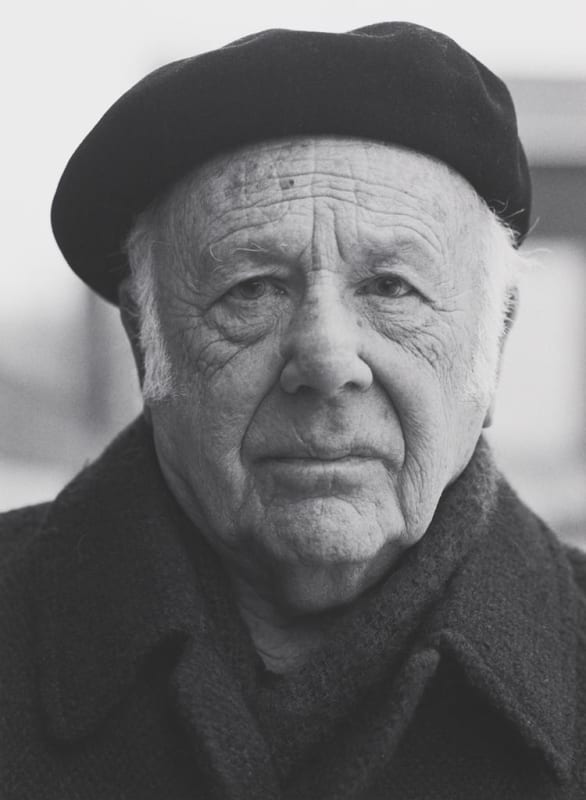Paul Strand US, 1890-1976
"Your photography is a record of your living, for anyone who really sees."
- Paul Strand
Paul Strand was born in New York City on October 16, 1890. His father gave him his first camera when he was twelve. In 1907, he enrolled at the Ethical Culture School where he was strongly influenced by one of his teachers, Lewis W. Hine. The class visited Alfred Stieglitz’s 291 gallery and Strand was exposed to the Pictorialist style of photography, including Stieglitz, Steichen, White, Kasebier, Cameron, and painters such as Picasso. Hine influenced Strand in his belief that photography “forced youngsters to recognize what is good in composition by selection from the infinite objects about them”. Upon graduation in 1909, Paul’s father offered him a position as a clerk in the family enamelware import business. He accepted because he knew his father believed photography should be considered a hobby and not a way in which to make a living. However, during his free time, Strand would participate in the Camera Club of New York.
By 1911, Stand decided to open his own commercial photography business and began working as his contemporaries in the soft-focus style and experimenting with gum printing.
Influenced by modern painting and sculpture, by 1916 Strand began to deviate from his contemporaries and attempted to make artistic photography without manipulation of camera or development. With his use of geometric shapes, pattern and space, Strand’s work was a dramatic departure from Pictorialism. This year also marked Strand’s first major publication in Camera Work and his first one-person show at 291. The last issue of Camera Work in 1917 was devoted entirely to Strand’s photographs and his new vision of photography.
In addition to photography, Strand had an interest in film. Strand produced his first film with Charles Sheeler in 1921. It was based on Walt Whitman’s Manahatta, which was later shown under the title New York the Magnificent. Over the next decade Strand traveled and continued his work in film and still photography.
When traveling to Mexico City in 1932 to photograph, Strand was invited to show at the Sala de Art. The show opened in 1933 when he was appointed Chief of Photography, Cinematography and Secretariat of Education of Mexico to the Department of Fine Arts He produced a series of socially oriented films on Mexican life. Redes or “Nets” was released in the U.S. in 1936 as The Wave with its first commercial showing in 1937. The photographic work Strand did in Mexico was so significant that it was included in the first Museum of Modern Art photography exhibition in 1937. In addition, he published a book in 1940 of twenty hand-gravure reproductions of the Mexican images.
He eventually founded the non-profit organization Frontier Films and produced many films to express his strong political views through important works such as Native Land and The Plow that Broke the Plains. Strand continued to produce motion pictures until 1943, when he returned full-time to still photography.
His first project after his return to still photography was in Vermont. The following years marked many more travels to areas such as New England, Paris, Italy, Outer Hebrides, Egypt and Ghana. His work was rewarded through numerous exhibitions around the world and books, including Time in New England, La France de Profil, Un Paese, and Living Egypt. In 1967, he was awarded the David Octavius Hill Medal by the Gesellschaft Deutscher Lichtbildner in Mannheim, Germany. Before his death in 1976 he published two portfolios On My Doorstep and The Garden.
Pioneering a new style in photography has earned Strand the title of the creator of modern American photography. Strand created images that some believe go beyond our vision and perhaps reach a higher truth of reality. He photographed with precision and truth. Honesty, no less than intensity of vision is the prerequisite of a living expression. This means a real respect for the thing in front of the photographer…this is accomplished without tricks of process or manipulation through the use of straight photographic methods.
Paul Strand searched for a higher truth using the camera machine to capture life. Considered a master and one of the initial contributors to the modern art era not only by his “straight” use of the camera but also by what and how he photographed. Paul Strand was inducted into the International Photography Hall of Fame and Museum in 1984. His inductee plaque is sponsored by William McIntosh.
- Lori Oden For IPHF

